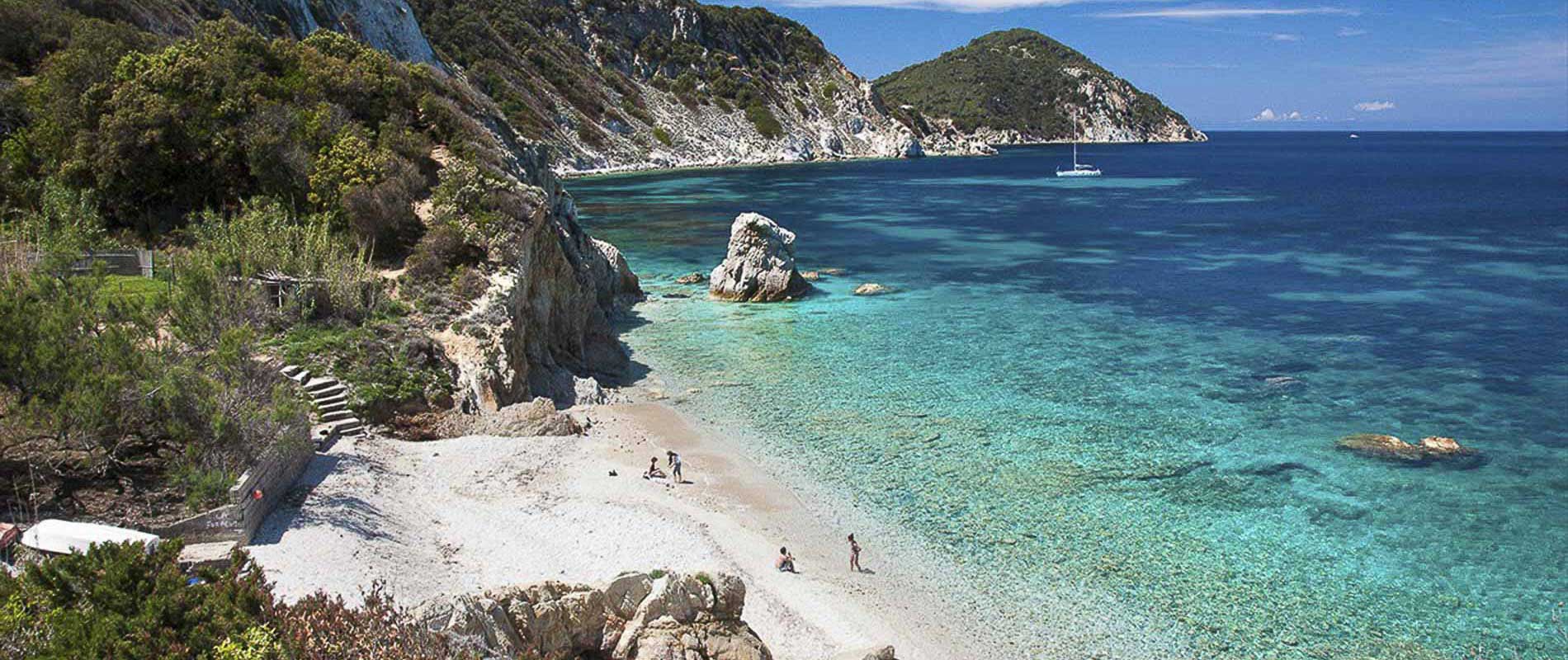
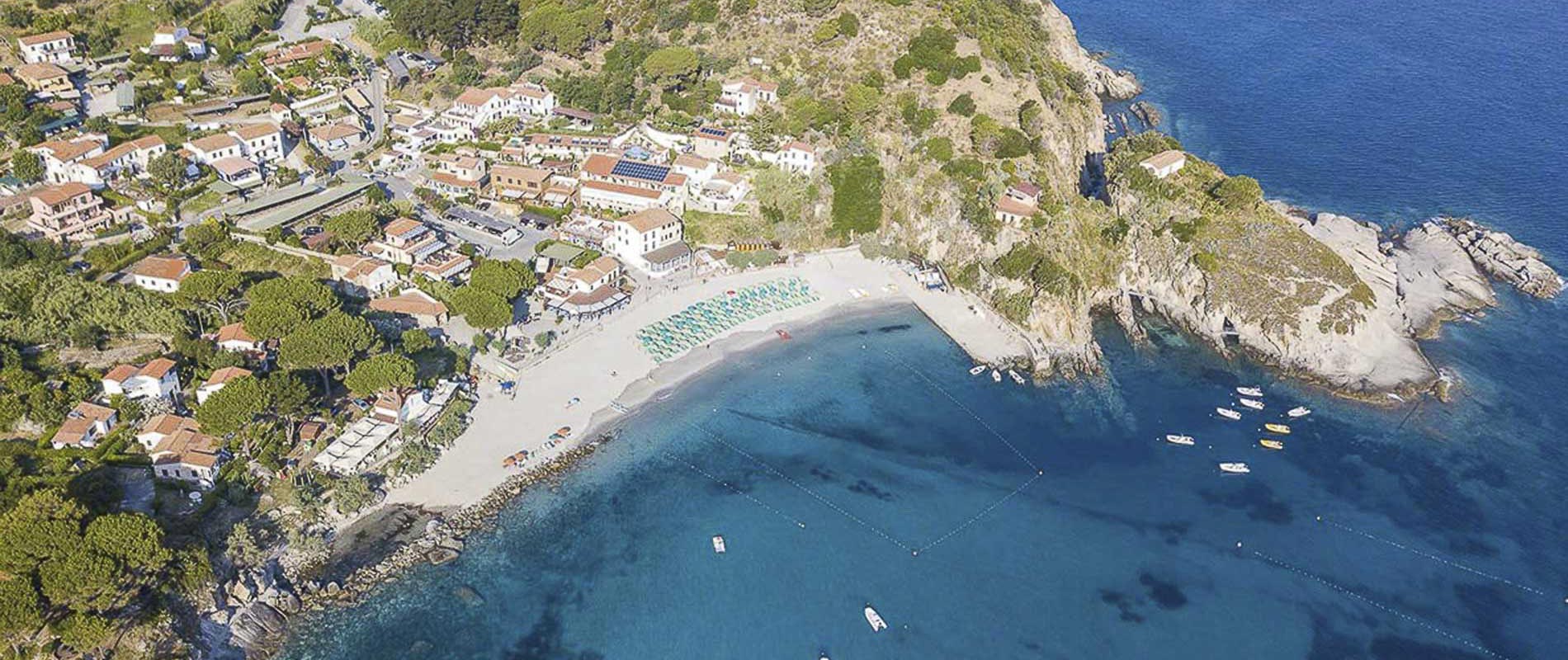
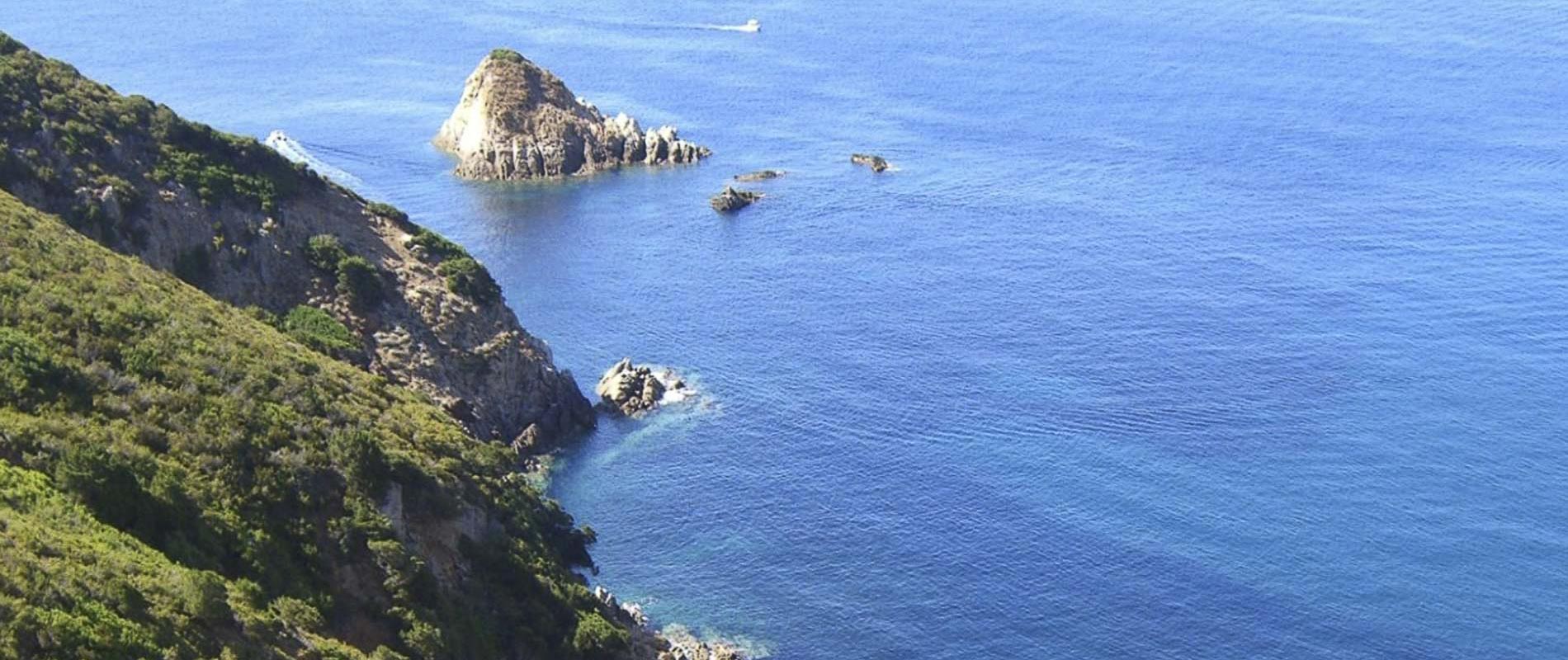
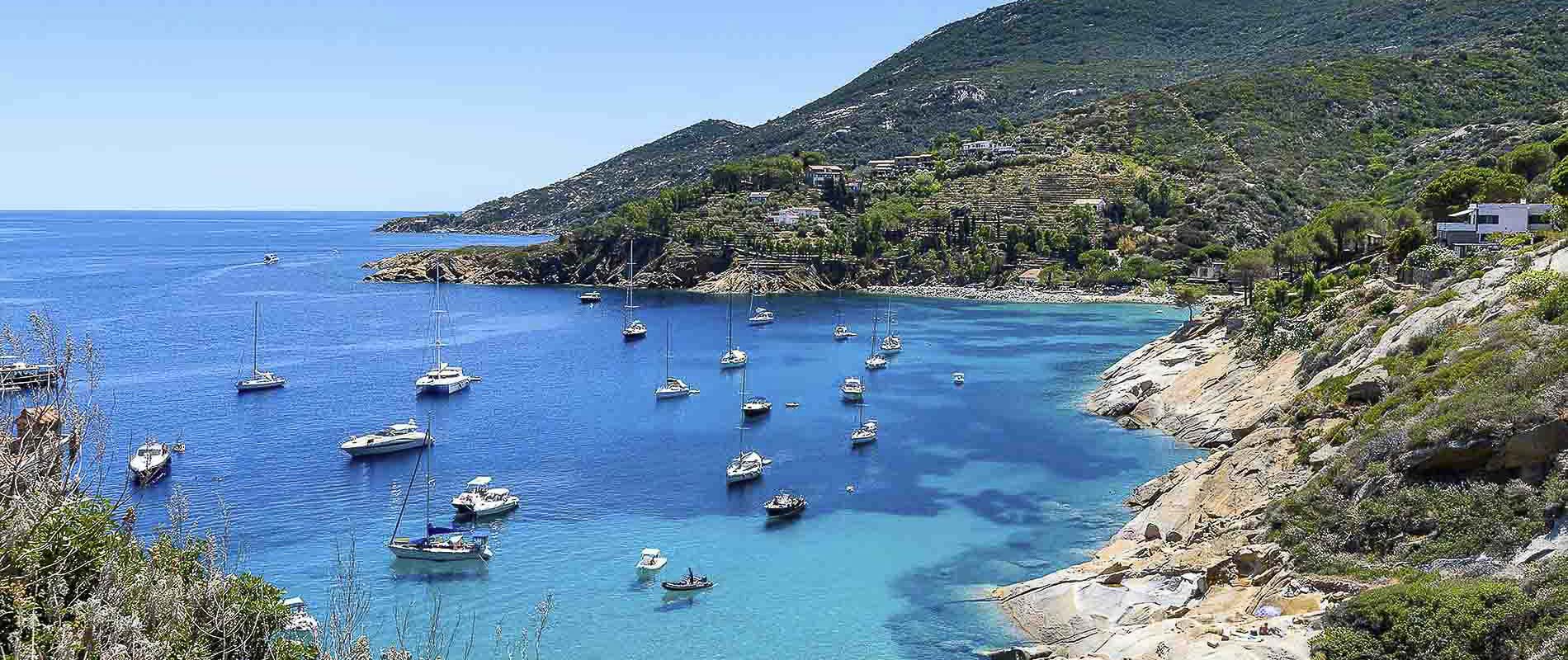
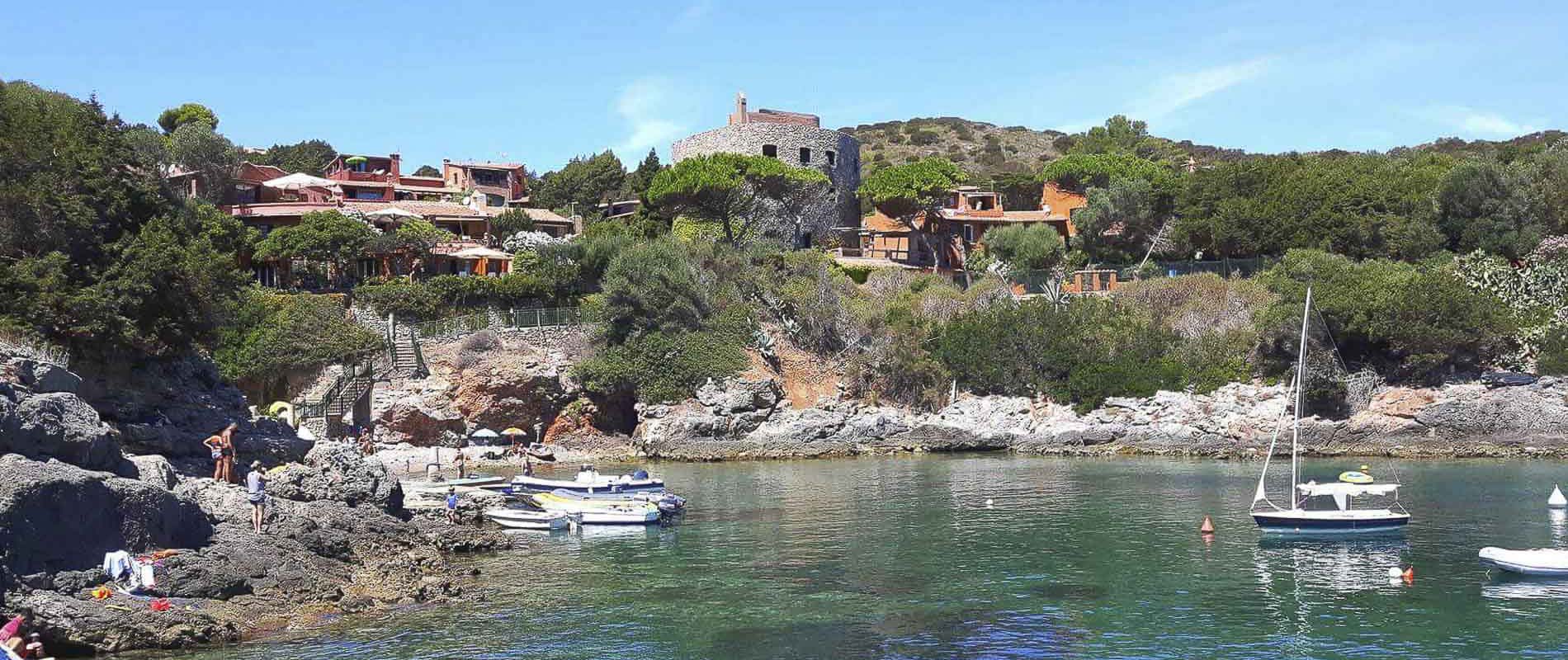

The Islands
GIGLIO ISLAND
It is the second-largest island in the Archipelago. Mainly mountainous, it is made up almost entirely of granite and its steep cliffs drop steeply into the sea while the island’s beaches are small equipped coves. Giglio Porto, Giglio Campese and Giglio Castello are the three inhabited centers of the island. Giglio Porto is the island’s main port, while Giglio Campese is the best equipped and best known seaside resort. Giglio Castello with its fortress, the high medieval walls and the labyrinths of alleys is its historical heart. Giglio Island boasts an incredible wealth vegetation and wildlife; characteristic of its landscape is the terraces built on the steep cliffs for vine cultivation to produce the typical island wine: the Ansonico. Mini-cruises are often organized and depart from Castiglione della Pescaia to discover the archipelago islands.
GIANNUTRI ISLAND
Giannutri is part of the Giglio Island Municipality. This limestone island has a particular crescent shape and has four hills: Capel Rosso, Monte Mario, Monte Adami and Cannone and jagged coasts, with numerous coves and caves as well as the beaches of Cala dello Spalmatoio and Cala Maestra. The crystal clear waters of Giannutri constitute a marine reserve for the protection of the sponges, corals and plant species that cover the seabed.
The whole island is a protected natural area and the Mediterranean scrub and holm oak forests are chosen by different species of migratory birds for nesting.
Giannutri is also famous for the numerous colonies of “yellow-legged gulls” that populate it.
Mini-cruises are often organized and depart from Castiglione della Pescaia to discover the archipelago islands.
ELBA ISLAND
The largest of the Tuscan Archipelago is the ideal place for diving, trekking, and cycling lovers.
The island offers an amazing variety of landscapes: cliffs overlooking the sea, long golden beaches, and small white pebble coves west of Portoferraio, villages with a medieval flavor that dominates the hills as Capoliveri, Rio nell’Elba or Marciana, enchanting fishing villages such as Marciana Marina or Porto Azzurro.
As evidence of the island’s history, there are historical buildings and archaeological remains, Etruscan buildings, ancient hermitages, small parish churches, Medici fortresses, Spanish castles, and Napoleonic residences as well as the ancient metal mines.
Mini-cruises are often organized and depart from Castiglione della Pescaia to discover the archipelago islands.
PIANOSA ISLAND
The only island in the Tuscan Archipelago without mountains.
Inhabited since the Paleolithic era, Pianosa still retains the remains of a Roman villa and a catacombs system.
The Pianosa waters host a variety of animals and plant species of great beauty. The seabed holds archaeological amphorae from various countries and dating back to various eras.
Mini-cruises are often organized and depart from Castiglione della Pescaia to discover the archipelago islands.
MONTECRISTO ISLAND
The island of Montecristo is the wildest and most unspoiled of the Tuscan Archipelago. Biogenetic reserve of just over 1000 hectares, made up of pinkish-gray granite rocks and feldspar crystals.
To visit it you need to obtain a special permit from the Follonica Forestry Corps.
GORGONA ISLAND
The island of Gorgona is the smallest of the Tuscan archipelago.
A green mountain lying on the sea, mainly mountainous, and rich in vegetation typical of the Mediterranean scrub.
An uncontaminated nature that offers shelter to a multitude of animals and welcomes an infinite number of plant species.
The most beautiful coves with uncontaminated backdrops: cala maestra, cala marcona and cala scirocco with the Grotta del Bue Marino.
You can dock on the island only in case of danger, and you can dive only with authorization.
The excursions on the island of Gorgona are organized by the Gorgona Island Natural Park cooperative.
CAPRAIA ISLAND
Capraia is an island of volcanic origin with the eruption cone still clearly visible in the splendid Cala Rossa, framed by a landscape of steep cliffs, rocks with bright colors and intense color contrasts.
Inside, narrow valleys with very rich vegetation overlooked by small mountains crossed by waterways descending to the sea, creating small waterfalls and ponds.
The only inhabited centers are the tourist port and the town on the promontory above, characteristic for its alleys descending from the fort San Rocco to the lighthouse of Punta Ferraione.
The sea is the real treasure of the island of Capraia: clear and pure waters with an extraordinary diversity of uncontaminated seabed hosting many species of fish, mollusks, and crustaceans: a paradise for scuba diving, snorkeling or those who want to enjoy the boat island.
To arrive the departure is scheduled from the Medici port of Livorno.
FOLLOW US
YOUR HOLIDAY
EVENTS & MEETINGS
FATTORIA LA PRINCIPINA
Via dei Girasoli, 1
Principina Terra
58100 Grosseto
Tuscany – Italy
GPS: 42° 44′ 17” , 11° 3′ 54”
+39 0564 44141
info@fattorialaprincipina.it
+39 0564 44141
info@fattorialaprincipina.it
EVENTS AND CONGRESSES RESERVATIONS
+39 0564 441408
mice@fattorialaprincipina.it